Background information on Avatar 2
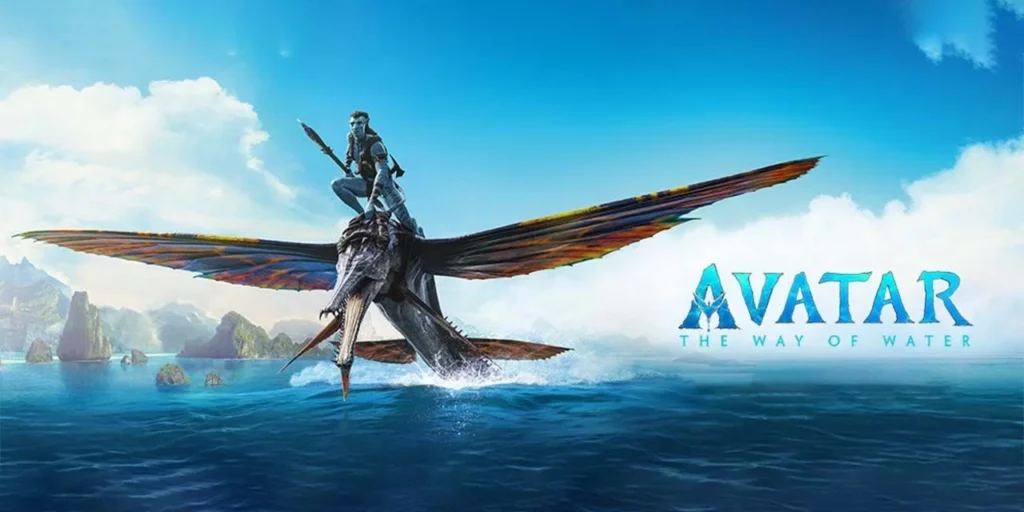
– The sequel to James Cameron’s “Avatar”, officially titled “Avatar 2,” has been a highly anticipated film.
– Original “Avatar” Release: The original movie premiered in 2009 and revolutionized the film industry with its groundbreaking special effects and immersive 3D technology.
– Development Timeline: Cameron had announced his intention to create sequels shortly after the first film’s success, but “Avatar 2” had seen multiple delays, making fans eager.
– Technological Advancements: Cameron is known for pushing the boundaries of cinematic technology, and he had been waiting for certain technological innovations before proceeding with “Avatar 2”.
– Expected Storyline: The sequel is expected to explore the underwater realms of Pandora, which promises to introduce audiences to new alien species and cultures within the film’s universe.
– Cast Continuity: Main actors from the original film, such as Sam Worthington, Zoe Saldana, and Sigourney Weaver, are reprising their roles alongside new cast members.
– Release Date: Despite the delays, the movie was finally released on 16 December 2022.
Production Budget
The estimated production budget of Avatar 2
- James Cameron’s “Avatar 2,” formally known as “Avatar: The Way of Water,” is speculated to have an immense production budget.
- Industry experts suggest the budget could be one of the highest in cinematic history, potentially exceeding $250 million.
- The advanced technology and long shooting schedules contribute significantly to the expansive budget.
- With Cameron’s reputation for groundbreaking effects and massive box office returns, the investment is deemed high-risk but potentially high-reward.
- The actual numbers have been kept under wraps by 20th Century Fox, and only estimates are currently available to the public.
Major expenses during the production
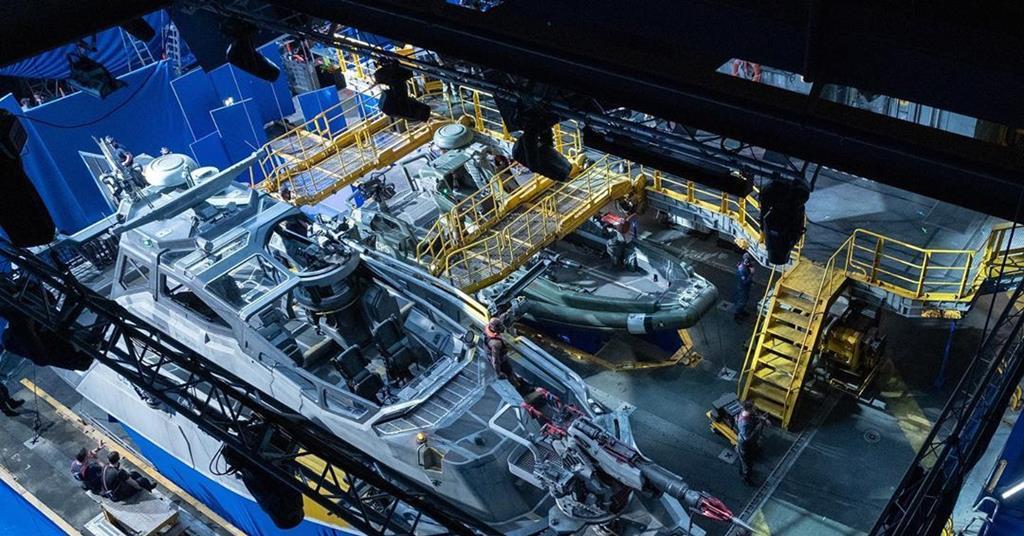
- Cutting-edge technology: A significant portion of the budget was likely dedicated to the technology needed to capture underwater scenes and high-definition 3D filming.
- Visual effects: Top-tier visual effects are a hallmark of Cameron’s films, necessitating a substantial part of the budget for Avatar 2’s otherworldly sequences.
- Cast and crew salaries: With a star-studded cast and a crew of technical experts, the payroll expenses contribute a large chunk to the overall budget.
- Production duration: The lengthy production timeline, including pre-production and post-production periods, escalates costs considerably due to ongoing expenses.
- Global filming locations: Filming across various international locations incurs travel, accommodation, and logistical costs, adding to the budget.
- Marketing and promotion: Although not part of the production budget, significant funds are also allocated for the film’s global marketing and promotional campaign.
The production of “Avatar: The Way of Water” showcases the cinematic milestone of combining art with technological prowess, where every dollar spent is aimed at pushing the boundaries of the audience’s experience.
Bearing in mind the proprietary technology and the sheer scope of the project, the expenses incurred during its creation resonate with the ambition not only to entertain but to revolutionize the film industry. While concrete figures are elusive, the sheer scale and the buzz surrounding the project indicate the financial commitment made to bring the movie to life.
Crew and Cast Salaries

The amount spent on crew and cast salaries
- While the exact figures are not publicly disclosed, it is estimated that a significant portion of “Avatar: The Way of Water”‘s production budget was allocated to the salaries of its cast and crew.
- The ensemble cast, led by Sam Worthington, Zoe Saldana, and Sigourney Weaver, would command high salaries given their established reputations and the success of the first film.
- Talent salaries in blockbuster films like “Avatar 2” are typically among the highest individual line items in the budget.
- Aside from the actors, highly specialized crew members, including those involved in visual effects, cinematography, and sound design, also demand competitive remuneration due to the skilled nature of their contribution.
- James Cameron, both as a director and a scriptwriter, would be entitled to significant compensation, reflecting his dual role and industry stature.
Breakdown of the highest-paid individuals
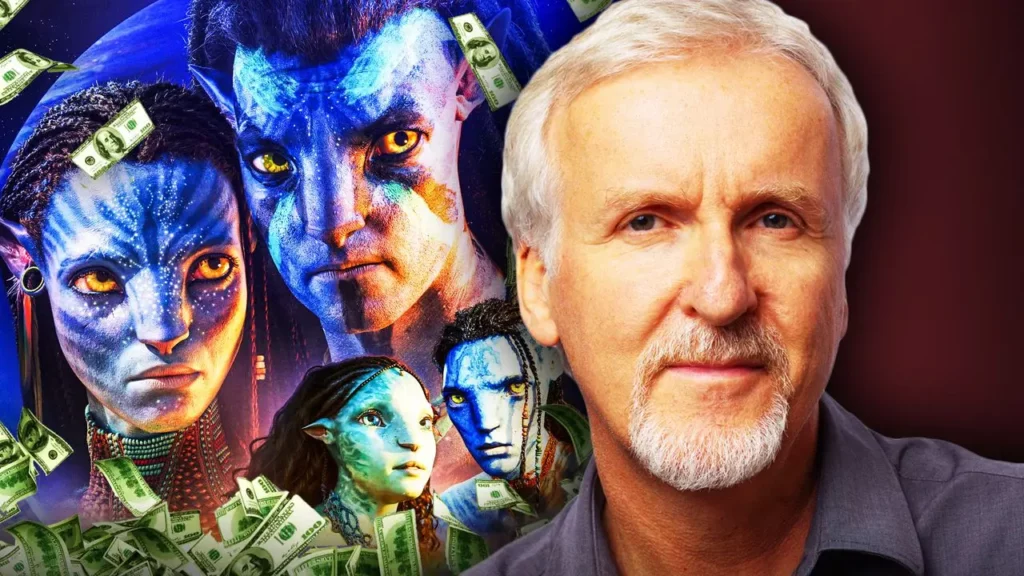
- James Cameron, as the driving force behind “Avatar: The Way of Water”, likely tops the list of highest-paid individuals associated with the project, although the exact figures for his salary and backend participation remain unspecified.
- The principal actors, especially those reprising their roles from the first “Avatar” film, are anticipated to have negotiated higher salaries for the sequel.
- Given the complexity of the visual effects, the VFX supervisors and lead technical directors might also be among the top earners, reflecting the importance of their role in the film’s production.
- Producers and executive producers typically have deals that include not only upfront salaries but also percentages of the film’s profits, which can lead to substantial earnings, particularly if the film performs well at the box office.
- Among the cast, seasoned actors like Sigourney Weaver, who brings a legacy of film success and credibility, would be presumed to command a considerable salary.
- Technical leads in charge of the film’s groundbreaking underwater filming technology could likewise be in a high salary bracket due to their niche expertise.
- Composer James Horner, who worked on the original “Avatar” score and whose music contributes substantially to the film’s atmosphere, would have been compensated handsomely for his work, had he composed for the sequel before his tragic passing in 2015.
The financial dynamics of “Avatar: The Way of Water” mirror the complex interplay of artistry and commerce in modern big-budget filmmaking.
The allocation of budget to crew and cast salaries underscores not only the value of top-tier talent in cinematic storytelling but also the competitive nature of the industry, where renowned actors, creators, and technical professionals drive the quality of a film to new heights.
As the budget threads its way through every aspect of production, the return on investment hinges on box-office performance and the film’s ability to craft an enduring legacy.
Visual Effects
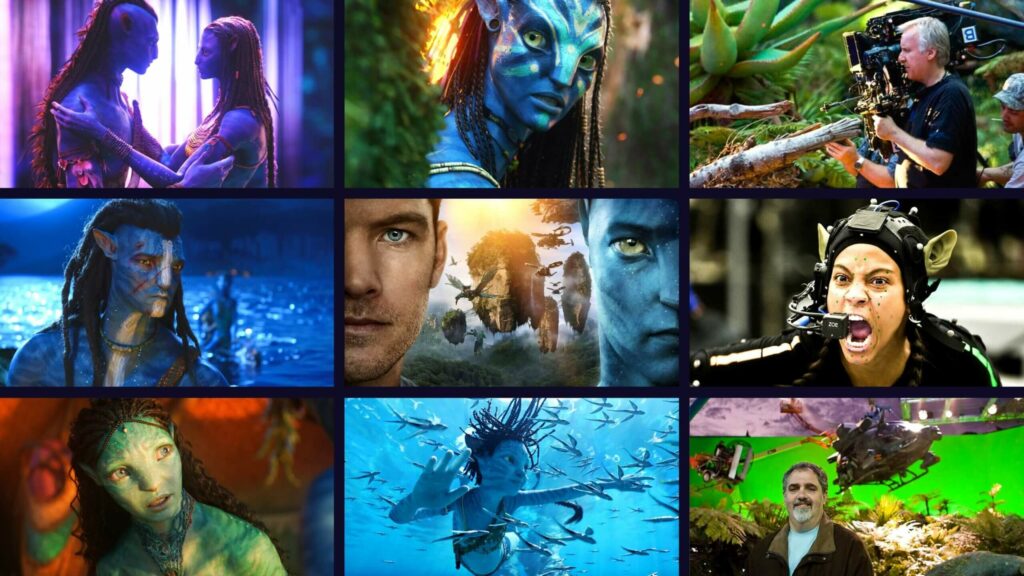
The cost of visual effects in Avatar 2
- The visual effects budget for “Avatar: The Way of Water” is likely to be a significant percentage of the overall production cost.
- Harnessing the power of state-of-the-art CGI technology to create the film’s lush alien worlds would have demanded substantial financial resources.
- WETA Digital, the visual effects company behind the original “Avatar,” is known for its expensive yet quality work, suggesting a high level of investment in visual effects.
- The sequel promised even more detailed and complex imagery than its predecessor, pushing the visual effects team to explore uncharted territory, which comes at a higher cost.
- James Cameron’s pursuit of perfection could mean that numerous scenes underwent multiple iterations, further inflating the visual effects expenses.
Contribution of CGI to the budget
- Computer-generated imagery (CGI) was pivotal in creating the bioluminescent environments and fantastical creatures featured in “Avatar 2.”
- CGI was essential not just for aesthetic purposes but also for narrative coherence, as many elements of the story are grounded in the film’s visuals.
- The utilization of CGI extended to performance capture technology, which captures actors’ performances and translates them into digital character models. This process is time-consuming and costly.
- Given the movie’s ambition to immerse the audience completely, it required a seamless blend of live-action and CGI, necessitating a generous CGI budget.
- Investments in R&D for pioneering new CGI techniques would also contribute considerably to the overall production budget.
The financial commitment to the visual effects of “Avatar: The Way of Water” reflects the importance placed on delivering an unparalleled visual spectacle. With James Cameron at the helm, known for reinventing and pushing technological limits, the utilization of visual effects is both a storytelling tool and a benchmark for future films.
While the exact cost of the visual effects for Avatar 2 remains undisclosed, the end product evidently showcases the financial and creative investments undertaken to achieve such visual innovation.
Set Design and Construction
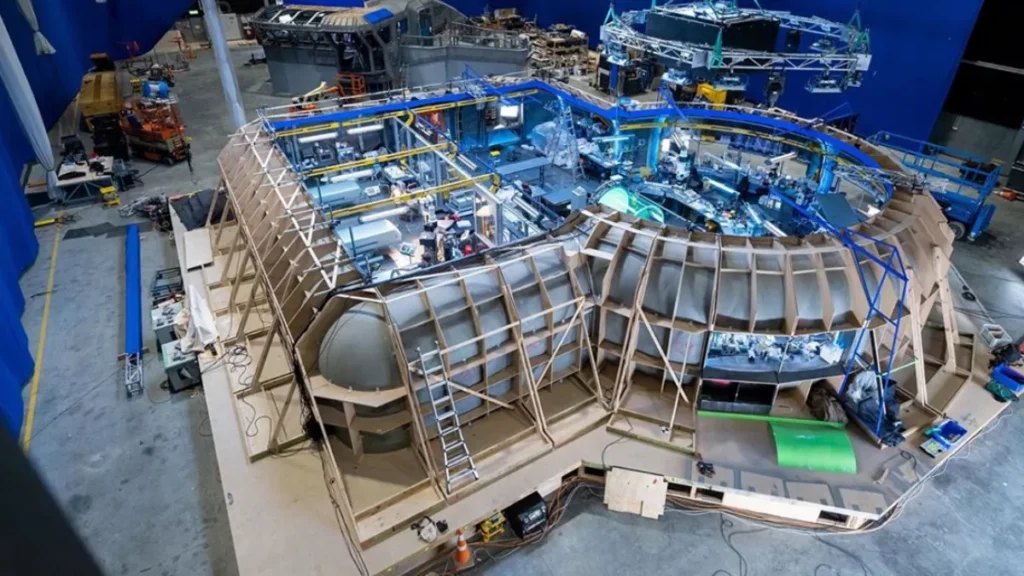
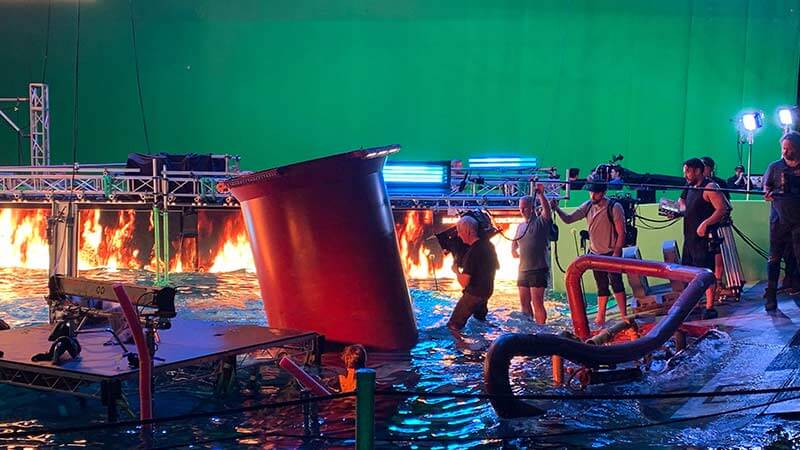
Investment in set design and construction
- Significant finances were allocated to the set design and construction for “Avatar: The Way of Water,” continuing the franchise’s tradition of ground-breaking production design.
- The film’s production required the creation of not only digitally enhanced environments but also tangible sets that could be used for filming and interaction by the cast.
- Considerable investment went into materials and labor to construct sets that matched the film’s high standards of realism to facilitate the actors’ performances.
- Environmental sustainability was a factor in set construction, adding an ethical dimension to the cost equation, as materials needed to be sourced responsibly and waste minimized.
- Advanced weathering and aging techniques were used on sets to make them appear lived-in and authentic, which involved the expertise of skilled artists and craftsmen.
Notable set pieces and their costs
- The centerpiece of the “Avatar” sequel’s set design was the oceanic environment, which required innovative approaches to simulate underwater scenes.
- Large-scale tanks and motion capture pools were constructed, representing significant line items in the production budget, given their complexity and the technology involved.
- Replicas of alien flora and fauna for the aquatic sequences were meticulously crafted by hand, adding to the film’s artistic expenses.
- The production team also developed new methods to simulate the movement of water and light, enhancing the immersive quality of these underwater sets.
- Land-based sets, such as the expanded Home Tree and other Na’vi habitats, exemplified high costs due to their size and the detail required to bring them to life.
The investment in set design and construction for “Avatar: The Way of Water” was crucial in creating a believable and interactive world that complemented the digital aspects of the movie. By merging physical sets with digital enhancements, the filmmakers were able to craft an integrated visual experience.
Not only did the sets serve the purpose of storytelling, but they also pushed the boundaries of what was previously considered possible in terms of production design and construction.
The outlay on set pieces demonstrates the commitment to cinematic excellence and the comprehensive experience “Avatar 2” aimed to offer its audience.
Filming Locations
Expenses related to filming in different locations
- “Avatar: The Way of Water” production involved filming in various international locations, which introduced additional costs beyond visual effects.
- Transportation for cast, crew, and equipment to remote and exotic locales adds significant expenditure.
- Location fees, permits, and local taxes also form a portion of the budget when shooting in specific areas, especially those under environmental protection due to their natural beauty.
- Accommodation for shooting duration can result in heavy expenses, particularly for an extensive cast and crew required by large-scale productions like “Avatar 2.”
- The logistical costs of setting up, maintaining, and dismantling filming sets while adhering to environmental regulations can also escalate the budget.
Impact of location choices on the budget
- The choice to film on location can provide unparalleled authenticity to the movie’s setting, influencing the overall production value and audience immersion.
- While shooting on location may contribute to a higher budget, the aesthetic payoff in terms of natural lighting, breathtaking landscapes, and practical effects that augment CGI could be viewed as a justified investment.
- High-profile projects like “Avatar: The Way of Water” often receive incentives or tax credits for filming in certain locations, which can help to mitigate the impact of location expenses on the budget.
- However, International filming poses financial risks, including fluctuating currency exchange rates and unexpected costs related to local regulations or political unrest.
- Marketing and eventual box office reception can benefit from the diversity of filming locations, as different settings across the globe can increase the movie’s international appeal.
The intricate balance between the stunning environments captured on location and the complex visuals created through CGI for “Avatar: The Way of Water” underscores the dynamic filmmaking approach taken by James Cameron and his team.
While the expenses relating to various filming locations often increase the overall budget, their contribution to the film’s captivating aesthetic and the realistic foundation upon which the CGI could build remains instrumental in achieving the envisioned cinematic experience.
Moreover, the economic implications of location shooting also extend into realms beyond the production budget, affecting marketing strategies and the global reception of the film.
Marketing and Advertising
Budget allocated for marketing and advertising Avatar 2
- The budget for marketing and advertising “Avatar: The Way of Water” is reported to be substantial, reflective of its status as a tentpole film.
- Multimillion-dollar campaigns spread across various platforms such as television, digital media, and print are synonymous with blockbusters of this magnitude.
- Cross-promotions and partnerships with leading brands help defray marketing costs, providing increased visibility and engagement with potential audiences.
- Global marketing initiatives, including localized advertising campaigns, are significant elements due to the worldwide anticipation of the sequel.
- Fan engagement through social media, particularly via teaser content and interactive experiences, features prominently in the allocated marketing budget.
Promotional strategies employed
- Teaser trailers and behind-the-scenes footage are initial tactics used to build hype and anticipation months before the release of “Avatar 2.”
- Premieres and red carpet events strategically located in high-profile international film markets cultivate media buzz and celebrity endorsements.
- Leveraging the star power of the cast, including appearances on talk shows and interviews, plays a key role in the film’s promotional strategy.
- Interactive experiences such as theme park attractions and immersive exhibitions are part of the promotion, extending the link between the movie and its audience.
- Merchandising, including toys, apparel, and other collectibles, not only serves as additional revenue streams but also as marketing tools.
- Social responsibility campaigns, aligning with environmental conservation themes present in “Avatar 2,” help in engaging the audience on a deeper level.
“Avatar: The Way of Water” employs a comprehensive marketing and advertising approach, integrating traditional and innovative strategies to capture the attention of diverse demographics.
The budget delineated for these efforts is a testament to the significance placed on the global brand of “Avatar” and its cultural impact.
The marketing endeavors for “Avatar 2” traverse digital landscapes and tangible interactions, ensuring that the movie remains a talking point across every possible consumer touchpoint. Crafting a worldwide presence through fine-tuned advertising strategies enables the film to maintain a high level of visibility and anticipation up until its release, and beyond.
Other Production Costs
Additional expenses incurred during production
- High-end equipment and technology such as motion capture systems are a hefty investment, crucial for films like “Avatar: The Way of Water” to bring digital characters to life convincingly.
- Salaries for the cast, which often include high-profile actors, are a major part of the production budget; this is particularly true for sequels to successful films where actors may command higher fees.
- The crew wages, covering a wide array of departments from set design to post-production, represent a recurring cost throughout the duration of the filmmaking process.
- Insurance costs ensure the production can recover from unforeseen events such as natural disasters, accidents, or illness that could otherwise derail the project financially.
- Feeding and catering for the entire cast and crew for the duration of filming is an often overlooked but significant expense in film production.
- Contingency funds are set aside to cover unexpected expenses, providing a financial buffer that can save a production from overruns.
Distribution and post-production costs
- Editing, sound design, and scoring provide the finishing touches to the film but require highly specialized talent and time, resulting in substantial costs.
- Marketing and promotion are critical to a film’s success and can sometimes equal or exceed the actual production costs, particularly for tentpole films with global appeal.
- The creation of physical copies (such as DVDs or Blu-rays) and distribution to cinemas worldwide entails significant expenditure.
- For films released on streaming services, distribution costs can also involve platform licensing fees and partnership negotiations, impacting the overall budget.
- Film prints and digital cinema packages (DCPs) for theatrical release are produced, adding to the distribution budget.
- Compliance with different international ratings boards and localization through subtitling, dubbing, or both, adapt the film for various markets, which incurs additional expenses.
When considering the production of a film of the scale and vision of “Avatar: The Way of Water,” it is clear that the budget encapsulates far more than the immediately apparent costs such as cast and set construction.
The initial investment in leading-edge technologies for capturing performances in high-fidelity CGI environments sets a financial framework that spans the film’s development. Salaries for the extensive crew, which can number in the hundreds for large production, and additional line items like insurance and catering, contribute to a vast operating budget.
Furthermore, once principal photography and production wrap up, the film enters the labyrinth of post-production and distribution, each with their own suite of costs.
The meticulous work of editors, sound engineers, and composers shapes the raw footage into a coherent and polished cinematic experience. This phase is followed by a robust marketing campaign—often a global endeavor for blockbuster movies—that ensures visibility in a crowded market.
Lastly, the distribution strategy cements the financial trajectory of the film. Physical media, cinematic releases, and dealings with digital platforms contribute to the manifold expense column. Localizing the film for international audiences also tacks on further costs. The journey of a film’s budget extends from pre-production canvas to the post-release horizon, encapsulating a wide array of financial considerations beyond the camera lens.
Conclusion
Total estimated cost of making Avatar 2
The production of “Avatar: The Way of Water” was a highly ambitious project, with a myriad of costs that contributed to its total budget. Reports suggest that this sequel was one of the most expensive films ever made, with estimates often citing figures well in excess of $250 million.
Key drivers of these costs were the revolutionary visual effects technologies developed specifically for the movie, salaries for the top-tier cast and crew, and the extensive marketing campaign needed to promote the film globally. Other substantial costs stemmed from the logistics of live-action filming in exotic locations, including the vast set pieces requiring detailed attention to the minutiae of the fictional world of Pandora.
Production costs alone paint only a part of the full financial portrait; distribution and marketing expenditures can match or even eclipse those of the film shoot and post-production processes.
In the case of “Avatar: The Way of Water,” these post-production costs included large investments in global advertising—a calculated move to ensure that the film reached as wide an audience as possible, thereby increasing its revenue potential and brand prominence.
Comparison with the budget of the first Avatar film.
To put the production cost of “Avatar: The Way of Water” in perspective, it’s useful to compare it with the budget of its predecessor, “Avatar,” which was released in 2009.
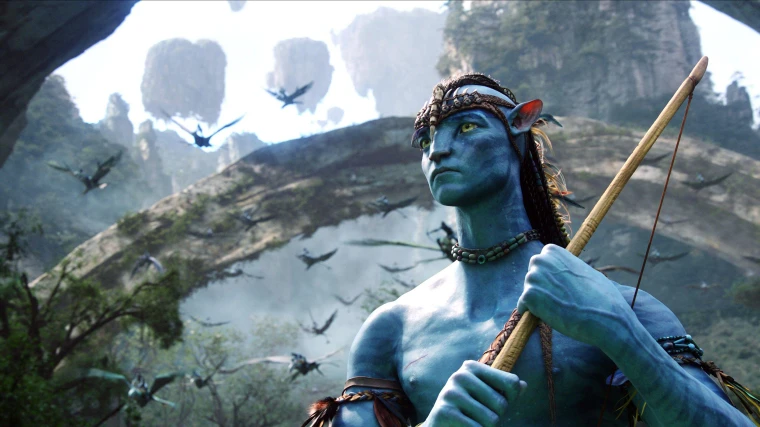
The original film was groundbreaking in its own right, setting a high bar for special effects and 3D cinematography. Its production budget was reportedly in the range of $237 million to $310 million, an exceptionally high figure at that time.
However, “Avatar: The Way of Water” not only met this precedent but is assumed to have exceeded it, accounting for inflation and technological advancements that demanded more significant investment. This increased cost can also be attributed to the heightened expectations set by the original film’s success, necessitating a bigger scope and more elaborate sequences to surpass the visual spectacle audiences had come to anticipate from the franchise.



